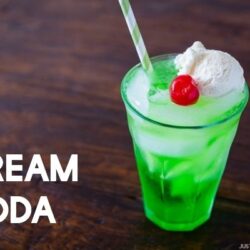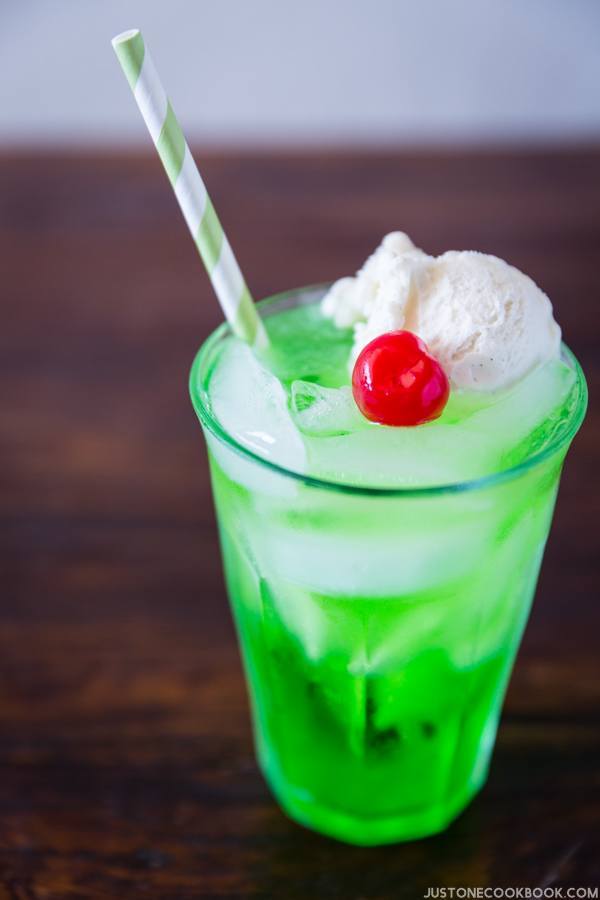
Do you have a drink that makes you feel nostalgic and reminds you of the carefree, innocent childhood days? For me, it’s Cream Soda (クリームソーダ). The cool, fresh sweet taste of the carbonated drink was the taste of happiness to a child’s mind.
My mom wasn’t a big fan of keeping soda in our fridge, so I was excited when the restaurants started to offer Cream Soda as part of the kid’s meal set. That neon green colored soda was so luscious and tempting to my eyes.
And when we were in Japan last summer, the same thing happened to our kids: they got hooked on this magical green world of happiness.
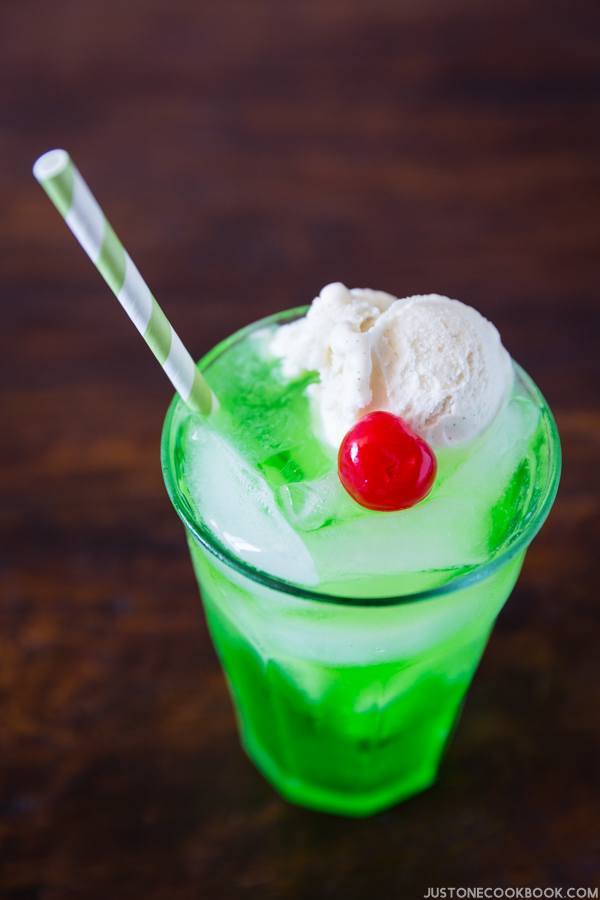
What is Cream Soda?
It’s possible that the cream soda you know is different from what I’ve shown in the picture above. Wikipedia shows all the international variations around the world and it was fun to see each country’s version.
In the United States, cream soda is often vanilla-flavored with either clear or colored (commonly light golden brown, but red, pink, orange and blue are also relatively common). At cafes, the drink is made with soda water, vanilla syrup, and cream or half and half.
In Japan, “cream soda” is a term used for an ice cream float made with Melon Soda (メロンソーダ) topped with a scoop of vanilla ice cream (except for Okinawa, which follows American style).
Make Japanese Cream Soda with Melon Soda
It might be a bit strange to you, but melon-favored soda is quite popular in Japan. It is the base of Japanese cream soda, which consists of mixing melon-flavored syrup and club soda. To be honest, melon syrup doesn’t taste anything like melon, but it tastes quite good. It is not healthy to drink all the time, but it’s a nice special treat! Besides melon soda, we also use melon syrup for shaved ice in Japan.
Some restaurants and cafes in Japan serve Melon Soda along with Cream Soda. You can also enjoy it from cans or bottles sold at vending machines and grocery stores.
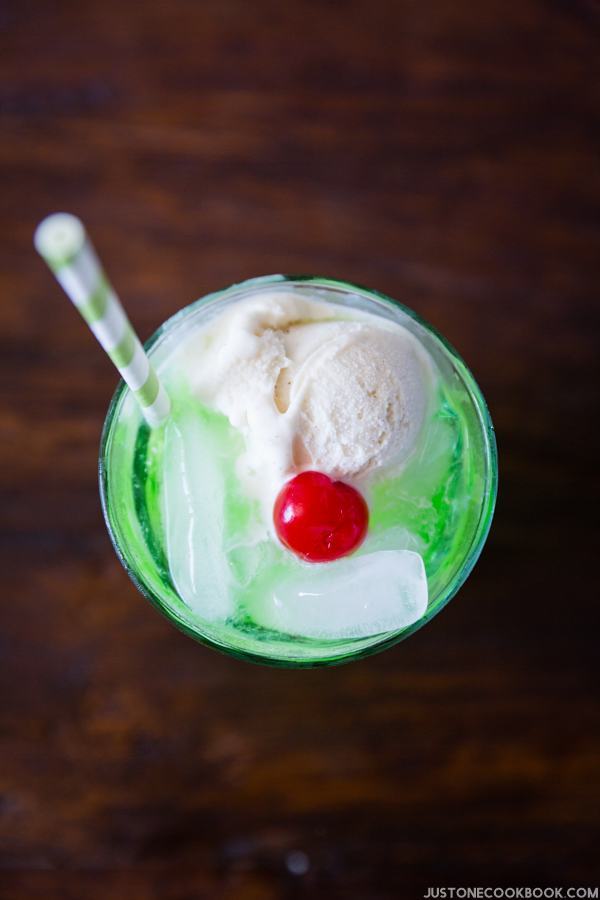
I found the melon syrup at a local Japanese supermarket, but you can purchase one on Amazon. I apologize in advance to those of you who don’t have access to this melon syrup to create this delicious drink. The melon syrup is not made with natural ingredients so I can’t replicate this exact flavor. You can make a “healthier” melon syrup by mixing simple syrup and pureed melons (cantaloupe), but… I know, it’s just not quite the same.
For those of you who can purchase melon syrup in a Japanese supermarket, enjoy making Melon Soda or Cream Soda. And if/when you go to Japan, don’t forget to try Melon Soda and Cream Soda there!
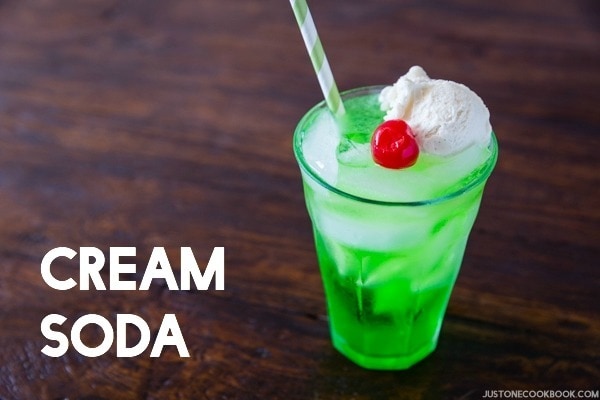
Wish to learn more about Japanese cooking? Sign up for our free newsletter to receive cooking tips & recipe updates! And stay in touch with me on Facebook, Pinterest, YouTube, and Instagram.
Japanese Cream Soda
Ingredients
- 3 Tbsp melon syrup
- ice cubes
- ¾ cup club soda
- vanilla ice cream
- maraschino cherries (optional)
Instructions
- Gather all the ingredients.
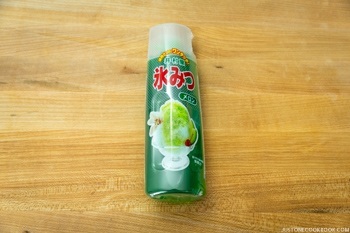
- Add ice cubes to a glass and add 3 Tbsp melon syrup.
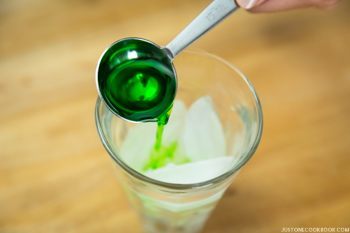
- Add ¾ cup club soda.
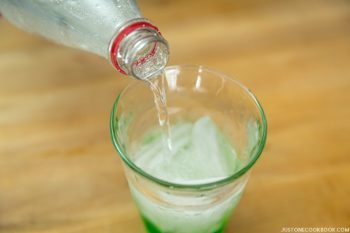
- Mix well with a spoon.
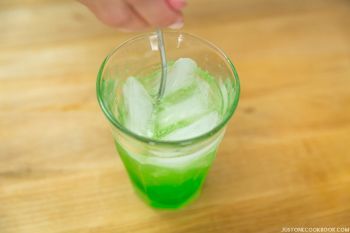
- Top with vanilla ice cream.
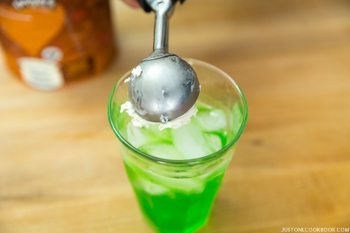
- Garnish with maraschino cherries and enjoy!
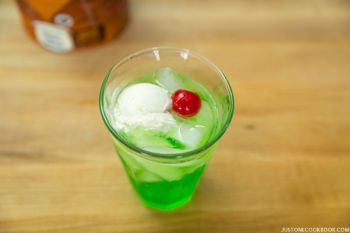
Nutrition
Did you make this recipe?
Tag @justonecookbook on Instagram so we can see your delicious creation!
Editor’s Note: The post was originally published on Sep 18, 2015. The post content has been updated in July 2017.


